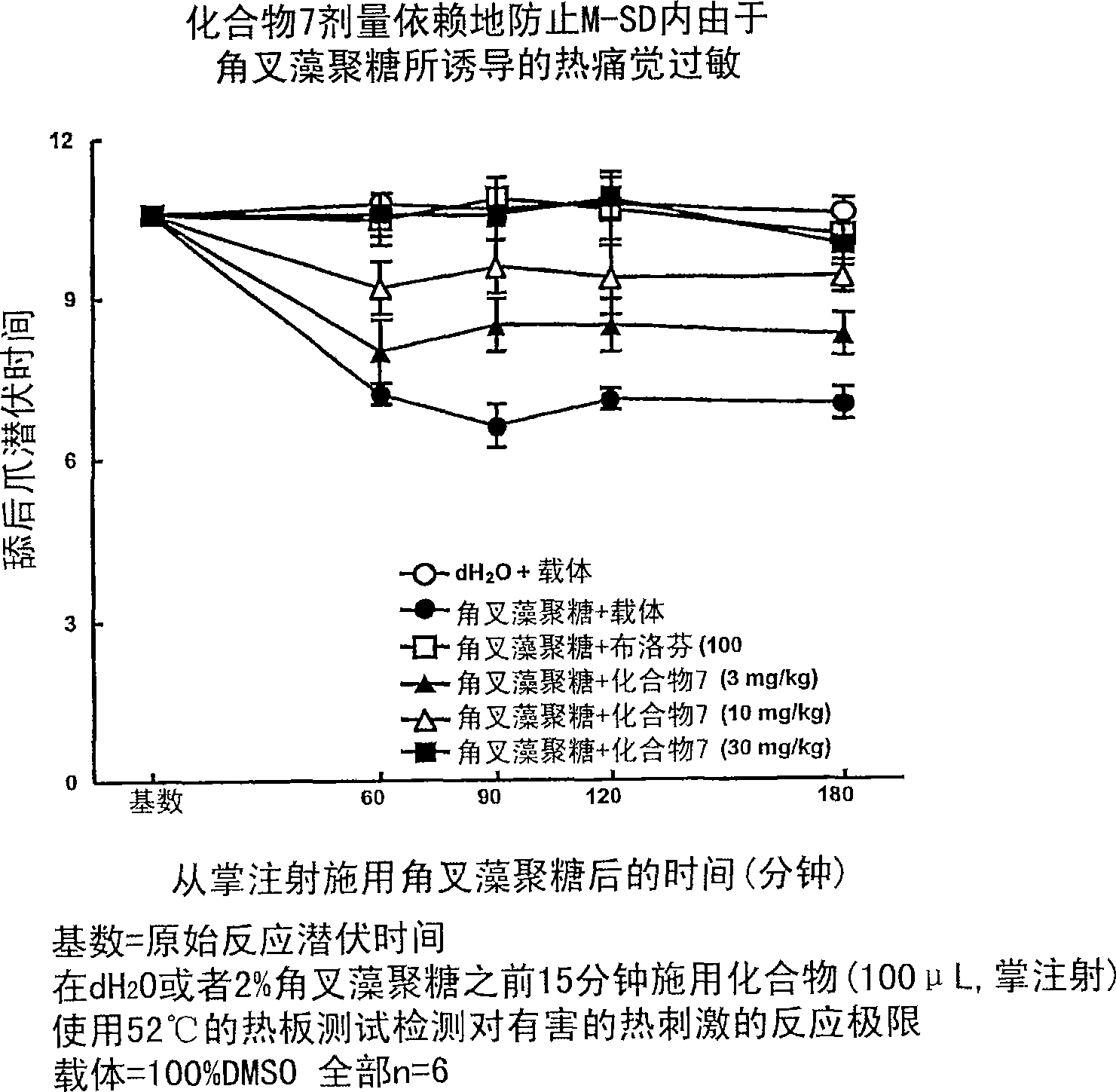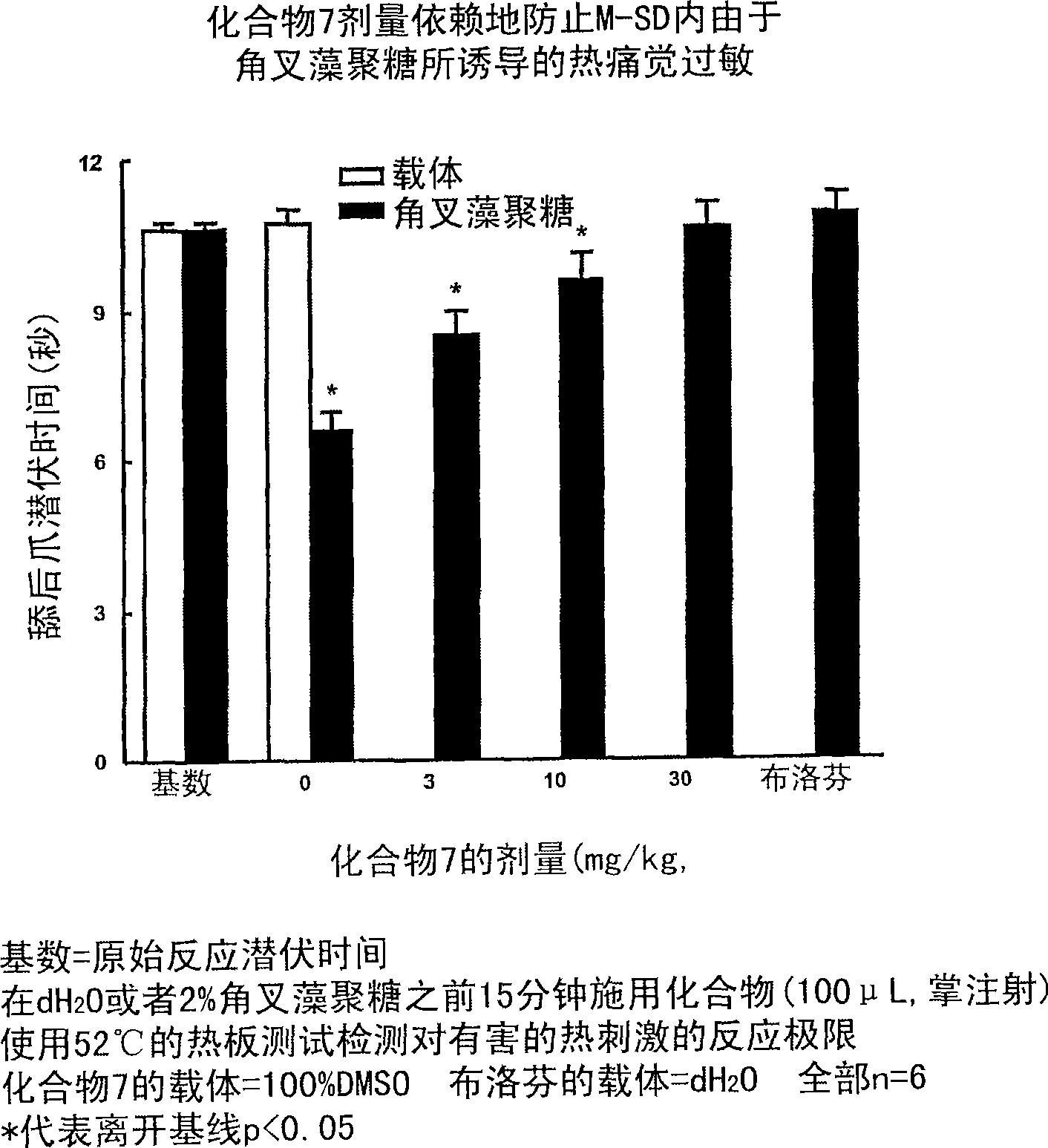The lipoxin receptor, FPRL1, as a tool for identifying compounds effective in the treatment of pain and inflammation
An effective treatment and compound technology, applied in the direction of biological testing, material inspection products, etc.
- Summary
- Abstract
- Description
- Claims
- Application Information
AI Technical Summary
Problems solved by technology
Method used
Image
Examples
Embodiment 1
[0258] Example 1: Analysis of Receptor Selection and Amplification Techniques
[0259] Functional receptor analysis, receptor selection and amplification technology (R-SAT) was used to investigate the pharmacological properties of known or novel FPRL1 agonists. R-SAT is disclosed in US Patent Nos. 5,707,798, 5,912,132 and 5,955,281, all of which are hereby incorporated by reference in their entirety (including any drawings).
[0260] Briefly, NIH 3T3 cells were grown to 70-80% confluency in 96-well tissue culture plates, and cells were transfected with plasmid DNAs for 16-20 hours using Polyfect (Qiagen Inc.) according to each manufacturer's instructions. R-SATs are typically performed with 3ng of receptor and 20ng of β-galactosidase plasmid DNA per well. All receptor and G-protein constructs used were in pSI-derived mammalian expression vectors (Promega Inc) as previously described. The FPRL1 receptor gene was amplified from genomic DNA by PCR using oligodeoxynucleoside pri...
Embodiment 2
[0264] Example 2: FPRL1 receptor binding assay
[0265] The ability of the compounds disclosed herein to bind the FPRL1 receptor can be readily determined in receptor binding assays using the following reagents, supplies and methods.
[0266] 1. COS cells transfected with FPRL1 receptor (or replaced by another transfected cell line that cannot endogenously express FPRL1 receptor) were grown in a suitable medium on a 24-well culture plate.
[0267] 2. Prepare radiolabeled assay solution, which is 245 μl, 0.25 nM [ 125 I] WKYMVm working solution was mixed with 5 μl of the following solutions (each solution): 50 μM unlabeled WKYMVm working solution, 0.25 nM [ 125 I] WKYMVm working solution, HEPES buffer alone or 50X test compound.
[0268] 3. Aspirate the medium from the 24-well plate with a Pasteur pipette connected to a vacuum. Cells were not rinsed.
[0269] 4. Add 250 μl of the radioactivity assay solution prepared in step 2 to each assay well, and place the plate on an o...
Embodiment 3
[0273] Example 3: Detection of changes in cytosolic calcium in transfected HL-60 cells
[0274] 1. Wash the HL-60 cells transfected with FPRL1 or a kind of control receptor with phosphate-buffered salt, the concentration of the HL-60 cells is 1-3×10 per milliliter 6 cells.
[0275] 2. 2 [mu]M Fura-2 was added to the cells and the increase in intracellular calcium was measured in the presence or absence of variable concentrations of the compound.
[0276] 3. At 100 nM, the response was compared to that generated by application of the standard reference ligand WKYMVm.
[0277] 4. The intracellular free calcium concentration is calculated by the following formula:
[0278] [ Ca 2 + ] 1 = K d ( F - ...
PUM
 Login to View More
Login to View More Abstract
Description
Claims
Application Information
 Login to View More
Login to View More - R&D
- Intellectual Property
- Life Sciences
- Materials
- Tech Scout
- Unparalleled Data Quality
- Higher Quality Content
- 60% Fewer Hallucinations
Browse by: Latest US Patents, China's latest patents, Technical Efficacy Thesaurus, Application Domain, Technology Topic, Popular Technical Reports.
© 2025 PatSnap. All rights reserved.Legal|Privacy policy|Modern Slavery Act Transparency Statement|Sitemap|About US| Contact US: help@patsnap.com



